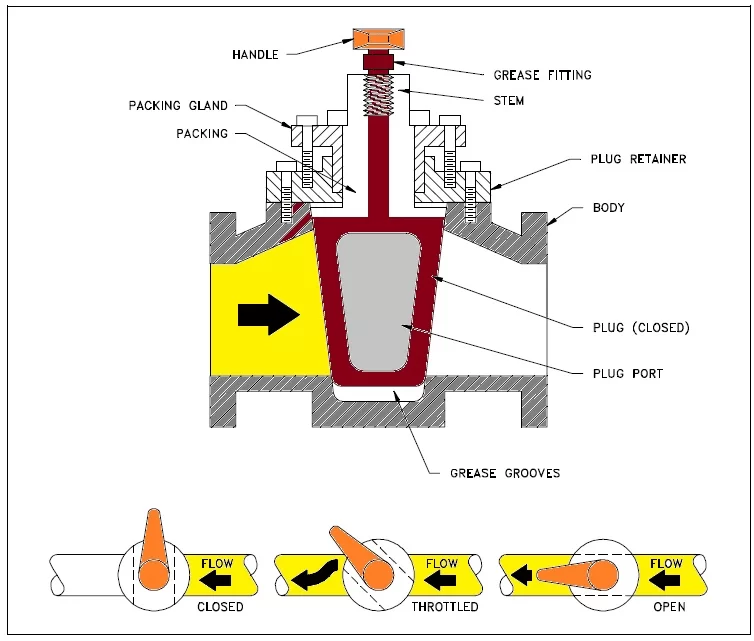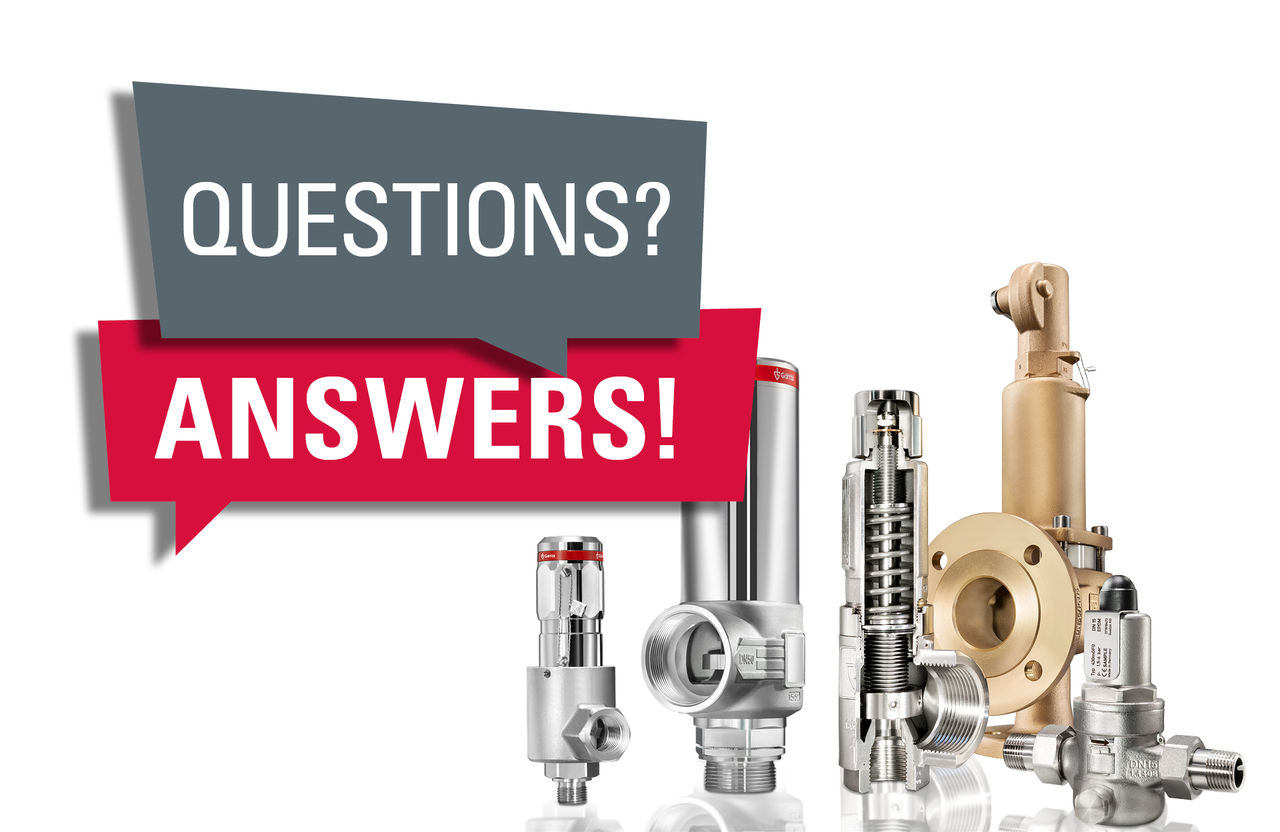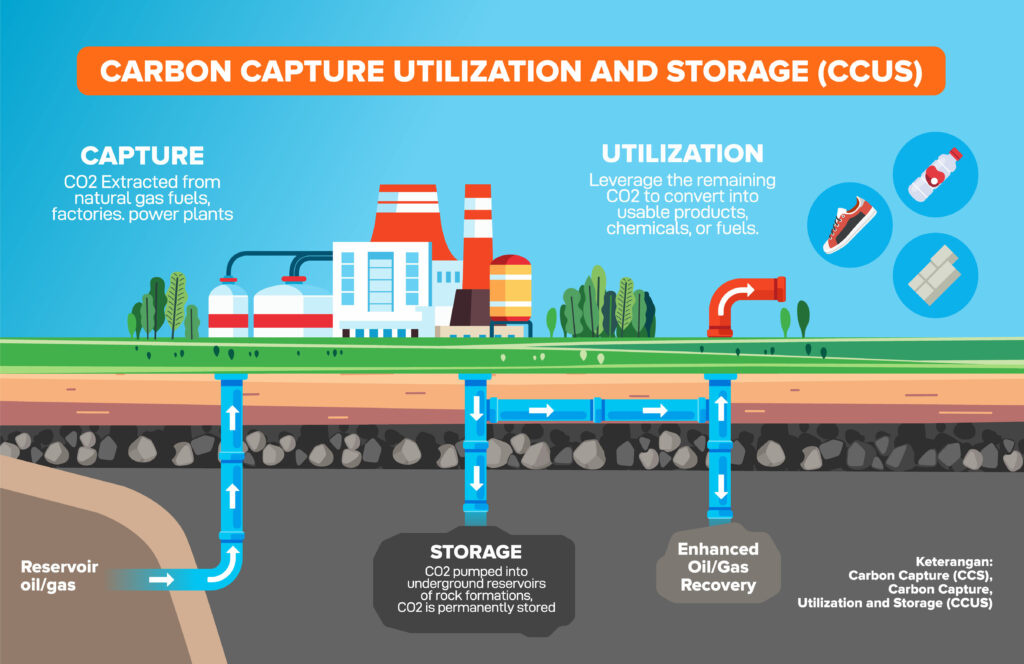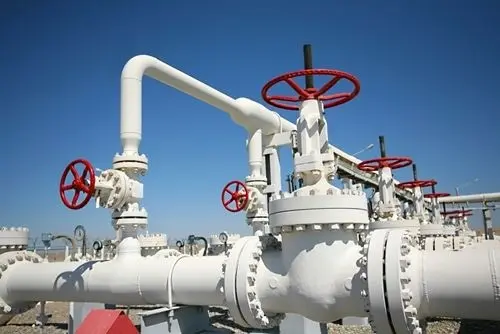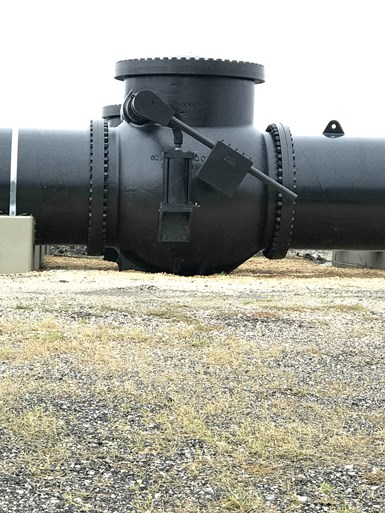Valve Trim: The Secret to Reliable Valve Performance
When someone says, “this is a good valve,” they usually mean it works well, lasts long, and controls flow reliably. The secret behind all of this? The valve trim — the internal parts of a valve that make it function.
In this detailed and simple guide, we’ll explain what valve trim is, what it includes, why plug shape matters, how to choose materials, and how to select the right trim for your process. We’ve added tables, real-life examples, and diagrams to make this beginner-friendly and useful for you.
What Is Valve Trim?
Valve trim refers to all internal parts of a valve that come into direct contact with the flowing fluid and play a role in controlling flow, pressure, or shut-off. These parts also take most of the wear and tear from fluid movement, so they are essential to a valve’s performance and lifespan.

Components of Valve Trim
Below are the typical parts that make up the trim of a valve:
| Trim Component | Function |
|---|---|
| Plug ( Disc / Ball / Gate etc ) | Moves to control or shut off flow |
| Seat(s) | Seals against the plug to stop flow completely |
| Stem | Connects actuator/handle to plug to transfer motion |
| Back Seat | Provides a secondary seal when valve is fully open |
| Spacers / Bushings / Pins / Guides / Springs | Help in alignment, sealing, wear resistance, and smooth movement |
Example:
In a gate valve, the disc is the gate, the seat is where the gate sits when closed, and the stem moves the gate up or down.
Valve-Specific Trim Considerations
Ball Valve Trims
- Trim Components: Ball, seats, stem, and seals.
- Considerations: We often make seats from soft materials like PTFE, which may not suit high-temperature or abrasive services but for high temperature or abrasive applications, we need to use metal seats.
Gate Valve Trims
- Trim Components: Wedge/disc, seats, stem, and backseat.
- Considerations: We do not recommend using these for throttling because improper trim materials can cause galling.
Check Valve Trims
- Trim Components: Disc, seat, hinge pin (for swing check), and guide bushings.
- Considerations: We select trim materials based on the fluid’s corrosiveness and the valve’s orientation.

Plug (Disc) Profiles: Flow Control Made Easy
The shape of the plug affects how the valve modulates the flow hence, we select different plug profiles based on the application type—whether you need quick shut-off or gradual control.
| Plug Type | Flow Behavior | Applications |
|---|---|---|
| Quick Opening | Full flow achieved rapidly | On-off control valves, fire safety |
| Linear | Flow increases in equal steps with movement | Water systems, utility control |
| Equal Percentage | Flow change is gradual at first, faster later | Steam control, chemical dosing |

Trim Material Selection
Since flowing media (sometimes under extreme pressure, temperature, or corrosion) exposes valve trim, we must choose the correct trim material carefully..
| Material | Advantages | Applications |
|---|---|---|
| Stainless Steel (SS410/SS316 et) | Corrosion-resistant, food-safe | Water, food, pharma |
| Monel / Inconel | Excellent resistance to acids, chlorides | Oil & gas, offshore, chemicals |
| Hastelloy | Handles strong acids, oxidizers | Chemical plants, nuclear |
| Stellite (coated) | Extreme wear resistance | High erosion areas |
| Duplex / Super Duplex | High strength + corrosion resistance | Desalination, petrochemical |
What Is a Valve Trim Number?
Valve manufacturers (especially for gate, globe, and check valves under API standards) use Trim Numbers to indicate a specific combination of:
- Seat material
- Plug/Disc material
- Stem material
- Backseat material
For example:
API Trim No. 8 uses Stellite-facing on all parts, making it ideal for abrasive media.
This standardization helps in reordering, maintenance, or system design.
Comprehensive API 600 Valve Trim Chart
This chart details the common API 600 valve trims, including their stem, disc/wedge, and seat materials, typical applications, and important notes.
| Trim No. | Stem Material | Disc/Wedge Material | Seat Material | Applications | Notes |
|---|---|---|---|---|---|
| 1 | 410 SS | 410 SS | 410 SS | Non-corrosive services | Prone to galling; not recommended for throttling |
| 2 | 304 SS | 304 SS | 304 SS | Corrosive services | Prone to galling; differential hardness recommended |
| 3 | F310 SS | F310 SS | F310 SS | High-temperature services | Suitable for temperatures up to 1100°C |
| 4 | 410 SS | Hard-faced 410 SS | Hard-faced 410 SS | High-pressure, erosive services | Seats require minimum 750 BHN hardness |
| 5 | 410 SS | Stellite | Stellite | High-pressure, slightly erosive, corrosive services | Excellent wear resistance |
| 5A | 410 SS | Ni-Cr hard-faced | Ni-Cr hard-faced | Services where cobalt is undesirable | Non-cobalt alternative to Trim 5 |
| 6 | 410 SS | Cu-Ni alloy | Cu-Ni alloy | Moderate corrosion services | Combines strength and corrosion resistance |
| 7 | 410 SS | Hard-faced 410 SS | Hard-faced 410 SS | High-pressure, erosive services | Seats require minimum 750 BHN hardness |
| 8 | 410 SS | 410 SS | Stellite | Moderate pressure, corrosive services | Long service life up to 593°C |
| 8A | 410 SS | Ni-Cr hard-faced | Ni-Cr hard-faced | Moderate pressure, corrosive services | Non-cobalt alternative to Trim 8 |
| 9 | Monel | Monel | Monel | Highly corrosive services (e.g., seawater) | Excellent corrosion resistance |
| 10 | 316 SS | 316 SS | 316 SS | Corrosive services | Prone to galling; not ideal for throttling |
| 11 | Monel | Monel | Stellite | Corrosive services requiring hard-faced seats | Enhanced durability |
| 12 | 316 SS | 316 SS | Stellite | Corrosive services requiring hard-faced seats | Improved wear resistance |
| 13 | Alloy 20 | Alloy 20 | Alloy 20 | Highly corrosive services | Excellent resistance to sulfuric acid |
| 14 | Alloy 20 | Alloy 20 | Stellite | Highly corrosive services with erosive conditions | Enhanced durability |
| 15 | 304 SS | Stellite | Stellite | Corrosive services requiring hard-faced components | Improved wear resistance |
| 16 | 316 SS | Stellite | Stellite | Corrosive services requiring hard-faced components | Enhanced durability |
| 17 | 347 SS | Stellite | Stellite | High-temperature, corrosive services | Suitable for temperatures up to 593°C |
| 18 | Alloy 20 | Stellite | Stellite | Highly corrosive services requiring hard-faced components | Superior corrosion and wear resistance |
Notes on Hard-Facing (HF)
Hard-facing materials like Stellite provide enhanced wear resistance, especially in erosive or high-pressure applications.
Differences and Considerations
- Material Compatibility: Ensure that the trim materials are compatible with the process fluid to prevent corrosion and wear.
- Hard-Facing: Trims with hard-faced components offer better resistance to abrasion hence, are suitable for throttling applications.
- Galling: Using similar materials for disc and seat can lead to galling hence, opt for trims with differential hardness to mitigate this issue.
High pressure causes galling, a form of wear that occurs when sliding surfaces—especially similar metals—adhere to each other. It happens when two metal parts—like a valve stem and seat—rub against each other, and small particles from one surface weld to the other, causing roughness, sticking, or even seizure.

In Valve Context
In valves (especially gate and globe valves), galling can occur between:
- The stem and the disc
- The disc and the seat
- The stem and the backseat
This issue especially occurs when manufacturers use similar stainless steels like 410 SS or 316 SS for both surfaces without applying hard-facing or ensuring different hardness levels.
Why Is Galling a Problem?
- It increases torque needed to operate the valve.
- It can lead to seizing, thus, making the valve impossible to open or close.
- It causes damage to sealing surfaces, reducing the valve’s lifespan and performance.
How to Prevent Galling
- Use dissimilar materials for moving parts (e.g., 410 SS stem with Stellite-faced seat).
- Apply hard-facing (like Stellite, Ni-Cr alloy) to seats or discs.
- Use lubricants or coatings in the stem-thread areas.
- Avoid pairing soft stainless steels unless you treat one of the surfaces.
Example
If you use a valve with both the seat and disc made of 316 SS (Trim 10), it’s more likely to gall. But if you switch to Trim 12 (316 SS with Stellite-faced disc and seat), you significantly reduce the risk of galling.
How to Select the Right Valve Trim
Above all, choosing the right trim is not just about material, it depends on the job the valve is doing.
Here’s what to consider:
- Media Type: Is it clean water, dirty slurry, acid, gas, or steam?
- Pressure & Temperature: Higher ratings need tougher materials.
- Type of Operation: Is it shut-off, throttling, or modulating?
- Actuation Type: Manual, pneumatic, electric?
- Industry Compliance: Follow standards like API 600, ASME B16.34, or ISO 10434.
Where Valve Trim Is Used: Industry Examples
- Oil & Gas: Needs hardened trims like Stellite or Inconel to withstand high pressure and erosion.
- Water Treatment: SS 316 trims for corrosion-free long life.
- HVAC & Cooling: Linear plugs for smooth water flow control.
- General Manufacturing: Cost-effective trims for compressed air or low-pressure steam.
Summary: Trim Determines Valve Performance
The valve trim may be hidden inside the valve, but it determines:
- How smoothly the valve operates
- How long it lasts
- Whether it can handle the fluid in your system
Understanding valve trim helps in better procurement, installation, and troubleshooting especially in critical process systems.

